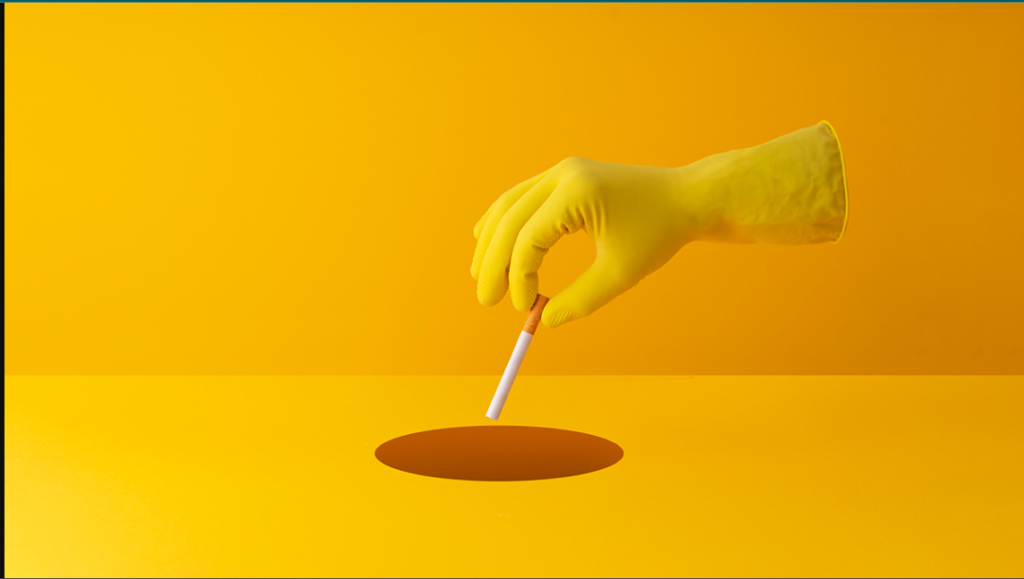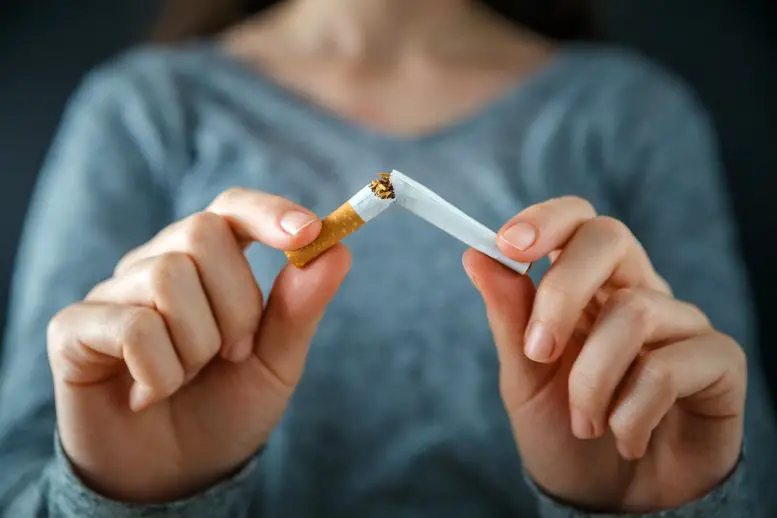Theta-burst transcranial magnetic stimulation (TBS) has been demonstrated to promote self-control, which in turn reduces cigarette cravings and smoking. According to the study, persons who are addicted to nicotine have altered brain structures and functions. These differences may have an impact on their inhibitory control, making it more difficult to resist the impulse to smoke.
Theta-burst transcranial magnetic stimulation treatment could reduce cigarette cravings.
A recent study from the University of Missouri School of Medicine suggests an alternative strategy to deal with cravings for cigarettes.
According to the research, those who undergo theta-burst transcranial magnetic stimulation (TBS), which uses strong magnetic pulses that change rapidly and affect brain activity, may have better self-control, less cravings, and consequently smoke less. When compared to healthy non-smokers, people with nicotine dependency typically exhibit significant anatomical and functional variations in the brain. There is evidence that smoking is linked to reduced grey matter, which indicates there are fewer neurons and other brain cells.

According to research, these variations may have an impact on inhibitory control (IC), which is the ability to suppress impulsive responses to stimuli and regulate spontaneous desires. According to senior investigator Brett Froeliger, PhD, professor of Psychiatry, “having difficulties with IC may make it harder to avoid smoking when the urge arises, in response to all the cues and contexts in the environment that trigger the behaviour to light a cigarette.”
ALSO READ: Queen’s Dilemma: The Game Of Gender Bias In Chess Clubs For Young Females
Transcranial magnetic stimulation(TBS)
TBS stands for transcranial magnetic stimulation, and it refers to two different types of magnetic stimulation: continuous TBS (cTBS) and intermittent TBS (iTBS). In contrast to iTBS, which uses the same amount of pulses irregularly for more than 190 seconds, cTBS involves repeatedly administering these three bursts for 40 seconds.
In the past, magnetic stimulation has been utilised to treat many mental diseases and illnesses. While iTBS to the left dorsolateral prefrontal cortex, a region of the brain important for cognitive functions, is FDA-approved for treating major depressive disorder, cTBS has only been experimentally tested to treat generalised anxiety disorder.

The study assessed the effects of both cTBS and iTBS to the right inferior frontal gyrus, a brain region highly associated with IC, and involved 37 subjects, the majority of whom were in their late 40s. Researchers discovered that while both cTBS and iTBS decreased urges and, as a result, smoking, cTBS enhanced IC.
“Identifying treatments that improve IC may help reduce smoking and can potentially help with preventing relapse following when a person attempts to quit smoking,” said Froeliger. The cycle of drug use among people with various substance use disorders may be broken by treatments that improve IC; nevertheless, further study is required to determine the clinical usefulness of TBS for treating substance use disorders.
A Transformative Shift in Public Health
The ramifications of a successful cure for nicotine dependence would extend far beyond individual lives. It could usher in a transformative shift in public health, with significant benefits for society as a whole. Here are some of the potential societal impacts of this groundbreaking discovery:

1. Reduced Disease Burden
Tobacco-related illnesses, such as lung cancer, heart disease, and respiratory disorders, place an enormous burden on healthcare systems worldwide. A cure for nicotine dependence could lead to a substantial decrease in the incidence of these diseases, alleviating the strain on healthcare resources and improving the overall health of communities.
2. Financial Relief
The financial toll of tobacco use is staggering. Individuals spend significant sums on cigarettes, and governments allocate substantial resources to treat tobacco-related illnesses. A decrease in smoking rates, driven by an effective cure, could result in considerable financial relief for both individuals and healthcare systems.
3. Improved Air Quality
The prevalence of smoking not only harms smokers but also endangers non-smokers through exposure to secondhand smoke. A reduction in smoking rates would lead to improved air quality, benefiting not only those who quit smoking but also the broader population, particularly in enclosed spaces.
4. Enhanced Productivity
Nicotine addiction often leads to reduced productivity, as smokers take breaks to satisfy their cravings. A cure for nicotine dependence could lead to a more focused and productive workforce, benefiting employers and the economy as a whole.
5. Positive Social and Environmental Impact
Smoking-related litter, such as discarded cigarette butts, contributes to environmental pollution. With fewer smokers, there would be a decrease in this form of pollution, resulting in a cleaner and more sustainable environment.
The Importance of Continued Research

While the potential cure for nicotine dependence offers great promise, it is crucial to emphasize that further research and development are needed to refine the medication and ensure its safety and efficacy. Scientists, healthcare professionals, and regulatory authorities must collaborate closely to bring this transformative treatment to those in need.
Additionally, it is essential for individuals struggling with nicotine addiction to seek guidance and support from healthcare providers and smoking cessation programs. While the cure holds great potential, quitting smoking often requires a holistic approach that addresses both the physical and psychological aspects of addiction.
A Brighter, Smoke-Free Future

As we look to the future, the discovery of a potential cure for nicotine dependence offers a beacon of hope. It represents a powerful tool in the ongoing battle against nicotine addiction and the associated health, social, and economic burdens. With continued dedication to research and a collective commitment to promoting healthier lifestyles, we may indeed say goodbye to cigarettes and welcome a brighter, smoke-free future for all.
Reference: “Effects of Hyperdirect Pathway Theta-Burst Transcranial Magnetic Stimulation on Inhibitory Control, Craving, and Smoking in Adults with Nicotine Dependence: A Double-Blind Randomized Crossover Trial” by Spencer Upton, Alexander A. Brown, Muaid Ithman, Roger Newman-Norlund, Greg Sahlem, Jim J. Prisciandaro, Erin A. McClure and Brett Froeliger, 9 August 2023, Biological Psychiatry: Cognitive Neuroscience and Neuroimaging.
DOI: 10.1016/j.bpsc.2023.07.014
ALSO READ: Manmade Threat? Massive Satellite Shines Brighter Than All Stars But The Brightest




































